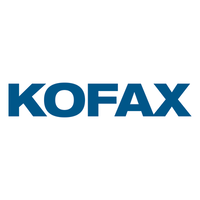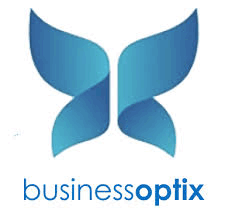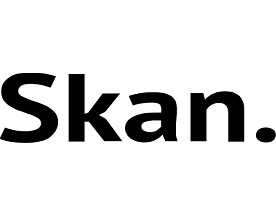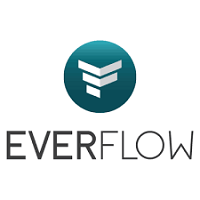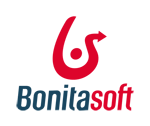What Is Process Mining Tools?
Process mining tools are software solutions that analyze data from information systems to generate insights and improve business process efficiency and effectiveness. To discover anomalies, bottlenecks, and opportunities for optimization, these tools gather information from event logs and display process flows using techniques such as data mining, process modeling, and machine learning.
One of the primary features of process mining tools is their ability to automatically locate and recreate end-to-end processes using logs from multiple systems such as ERP, CRM, and BPM solutions. This saves time and effort while also providing a comprehensive perspective of the present state of the processes, allowing companies to identify and prioritize areas for development.
Furthermore, process mining technologies enable users to simulate various scenarios and estimate the impact of future process modifications, assisting firms in making data-driven process optimization decisions. With real-time monitoring and reporting capabilities, these technologies allow for ongoing monitoring and improvement of processes, ensuring that they remain aligned with corporate goals and changing customer needs.
When selecting a process mining tool, look for a user-friendly interface, customisable dashboards, and the capability to handle huge and complex data sets. Integration with existing systems, scalability, and security are all important issues to consider. It is also critical to evaluate the vendor's customer assistance, training, and documentation to ensure that the product is implemented and used seamlessly.
Process mining tools have shown to be important assets for businesses looking to streamline operations, cut costs, and improve efficiency. These technologies enable firms to reach their performance goals and stay ahead of the competition by utilizing a data-driven approach to process analysis and development.
Benefits Of Using Process Mining Tools
Process mining tools are sophisticated software solutions with the potential to significantly impact enterprises of all sizes and sectors. They have numerous advantages that can help firms enhance their processes and operations, make data-driven decisions, and ultimately increase efficiency and profitability.
Let's explore, we'll go over the primary benefits of adopting process mining tools and why they're a vital investment for any organization wanting to optimize its processes.
1. Improve Process Visibility And Understanding: One of the primary benefits of process mining tools is the ability to provide a complete, real-time perspective of operations. These technologies may take data from a variety of sources, including ERP systems, CRM databases, and other IT systems, and present it in the form of simple process flowcharts. This enables firms to better understand their operations, detect bottlenecks, and reveal previously hidden inefficiencies.
2. Identify And Remove Process Bottlenecks: Companies can use process mining technologies to uncover process bottlenecks that are limiting their efficiency and productivity. These technologies can determine the specific places where operations are slowing down or generating delays by evaluating the data and discovering patterns and trends. This allows firms to take corrective action and adopt process improvements in order to minimize bottlenecks and streamline operations.
3. Increase Process Efficiency And Effectiveness: Organizations that understand their processes and can identify bottlenecks can utilize process mining technologies to make data-driven decisions and optimize their processes. By removing redundancies and inefficiencies, these technologies can assist organizations in increasing process efficiency, lowering costs, and improving overall effectiveness.
4. Ensure Compliance And Detect Fraud: Process mining tools can also be a valuable asset for businesses seeking to ensure compliance with industry rules or internal standards. By analyzing vast amounts of data, these technologies can uncover possible compliance concerns and assist firms in taking corrective action before they become larger problems. Furthermore, they can be used to detect fraud and identify suspected fraudulent activity, allowing businesses to avoid financial losses and preserve a solid reputation.
5. Facilitate Continuous Process Improvement: Process mining solutions give organizations real-time insights into their processes, allowing them to constantly monitor and assess their effectiveness. By measuring important process indicators and identifying process inefficiencies, these technologies assist firms in making informed decisions and implementing modifications to continuously improve their processes.
Important Factors To Consider While Purchasing Process Mining Tools?
When acquiring process mining tools, it is critical to consider a few key elements to ensure that you are making the best option for your firm.
Here are some crucial considerations to consider before making your purchase:
1. Data Compatibility: Before acquiring a process mining tool, make sure it is compatible with the data sources that your firm employs. This encompasses databases, ERP systems, and other business applications. Without data compatibility, the tool will be unable to adequately evaluate and display your processes.
2. Usability: User-friendliness is a crucial consideration when selecting process mining tools. Look for products with a straightforward and intuitive design, as this will make it easier for your staff to use and interpret the data. Some tools also include tutorials and training materials to assist users get started quickly.
3. Scalability: Your procedures and data will grow along with your organization. As a result, it is critical to select a process mining solution capable of handling enormous amounts of data while also scaling with your organization. This ensures that your investment in the tool is long-term and meets your future requirements.
4. Features And Functionality: Different process mining tools provide a variety of features and functionalities. Before making a purchase, you should evaluate your specific business demands and match them to the characteristics provided by the tool. Process visualization, data analysis, process improvement suggestions, and predictive analytics are some of the more frequent elements to look for.
5. Integration With Other Tools: Process mining technologies are most effective when combined with other business tools like Business Process Management (BPM) software or Business Intelligence (BI) tools. This provides a more comprehensive perspective of your processes and can aid in the extraction of actionable insights. Check if the process mining tool is compatible with the other tools that your firm utilizes.
6. Cost: Of course, cost is an important consideration when making any purchase. While process mining technologies can provide significant value to your organization, it is critical to calculate the return on investment (ROI) and establish whether the cost is reasonable for your budget and business requirements.
By taking these crucial variables into account, you can make an informed decision about acquiring process mining tools and guarantee that they match the specific demands of your firm. Remember to examine your needs, compare several tools, and select the one that provides the best value for your money.
What Are The Key Features To Look For In Process Mining Tools?
Process mining tools are effective solutions for firms that want to study, monitor, and optimize their operational processes. These tools combine data from a variety of sources, including process logs and IT systems, to create a thorough and visual portrayal of how procedures are carried out within a company. But with so many process mining tools on the market, it can be difficult for consumers to select the best one. That is why it is critical to understand the essential elements that contribute to a process mining tool's effectiveness and efficiency.
Let's explore, we'll go over the key characteristics to look for when purchasing a process mining tool.
1. Data Integration Capabilities: The first and most important aspect to assess is the tool's ability to integrate data from several sources. This comprises data from process logs, databases, and other information technology systems. A good process mining tool should be able to handle big and complicated data sets in order to deliver reliable insights into processes.
2. Automated Process Discovery: A good process mining solution should be able to automatically uncover processes without the need for manual intervention. This feature saves time and reduces the possibility of human error during the process discovery phase.
3. Process Visualization: One of the primary advantages of using a process mining tool is the ability to see and comprehend complex processes. The application should include simple and intuitive representations, such as process flowcharts, to help users understand how processes are carried out within their business.
4. Root Cause Analysis: One important characteristic to look for in a process mining tool is the ability to identify the source of process inefficiencies. This tool assists businesses in identifying the issues that are creating delays or errors in their operations, allowing for targeted solutions.
5. Performance Monitoring: Real-time monitoring of process performance is another important component to consider. A process mining tool should have dashboards and KPIs to help users track process performance and find bottlenecks or areas for improvement.
6. Process Conformance Checking: The tool should also be able to verify that processes are being followed exactly as intended. This feature assists organizations in ensuring compliance with their own processes and identifying any deviations that may impact operations.
7. AI And Machine Learning Capabilities: Some advanced process mining systems have AI and machine learning capabilities, which analyze data and discover trends to automatically suggest opportunities for process optimization.
8. User-Friendly Interface: Finally, the process mining tool's interface should be simple to use and browse. This ensures that all users, regardless of technical expertise, may utilize the product successfully and efficiently.
Which Industries Can Benefit The Most From Process Mining Tools?
Process mining technologies have gained popularity in recent years due to their capacity to find valuable insights and detect process inefficiencies inside a business. These tools examine digital data using algorithms and analytics, providing vital insights into how corporate activities are actually carried out. While the advantages of process mining tools are numerous, it is critical to understand which sectors will profit the most from their use.
One of the most major benefits of process mining tools is their potential to improve operational efficiency while lowering costs, making them especially useful in industries that rely significantly on streamlined processes, such as manufacturing, logistics, and supply chain management. These tools enable firms to map their processes in real time, finding bottlenecks and inefficiencies that may be affecting production.
By streamlining these processes, these industries can cut operational costs, improve resource utilization, and boost overall efficiency. Another business that can benefit from process mining tools is healthcare. Healthcare organizations must manage and coordinate complex operations such as patient flow, scheduling, and resource management.
Healthcare providers can improve patient care and cut expenses by utilizing process mining technologies. Financial services, such as banking and insurance, can greatly benefit from process mining technologies. These businesses deal with massive amounts of data and complex procedures, making it difficult to discover potential faults or areas for improvement manually.
Process mining technologies provide the required visibility into these processes, allowing financial institutions to optimize operations and boost efficiency while lowering the risk of fraud and compliance failures. Process mining tools can benefit a variety of businesses, including government organizations, retail, and telecommunications.
These tools can help government entities improve their operations, boost transparency, and provide better services to citizens. Retailers can use process mining to detect customer behavior trends, enhance inventory management, and improve supply chain operations. Similarly, telecoms businesses can utilize process mining technologies to monitor network traffic and enhance service delivery.
Conclusion
To summarize, selecting the best process mining tool for your firm is a critical decision that necessitates a careful assessment of various criteria. Before making a purchase, you must examine a variety of factors, including your business's demands and objectives, as well as the features and functionality of various tools. During the selection process, it is critical to consult key stakeholders and users to verify that the tool meets their needs and is user pleasant.
Conducting demos, tryouts, and soliciting recommendations from other users might also provide useful information. Furthermore, investing in a process mining tool with sophisticated capabilities like real-time monitoring, predictive analytics, and automation can result in significant cost savings and increased process efficiency. It is also critical to assess the tool's scalability and flexibility in order to support future development and changes within your organization.
In addition, researching the vendor's support and training can help guarantee that the product is implemented and used smoothly in your firm. Finally, it is recommended to use a solution that provides straightforward pricing and a clear return on investment (ROI) estimate. This can help to justify the expenditure to stakeholders while also demonstrating the tool's actual benefits.
We hope that this buyer's guide has provided you with useful insights and ideas to help you make an informed decision when selecting a process mining tool for your firm. With the proper tool, your organization may acquire a competitive advantage and drive continuous improvement in its business processes.


